Hero Electric has introduced the Cruz, its latest offering in the segment of economical electric scooters. Here’s a comprehensive lowdown on what the Cruz has to offer
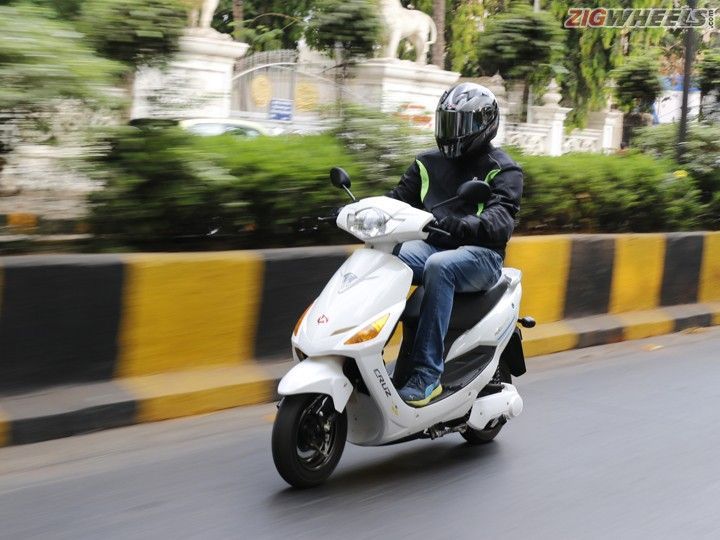
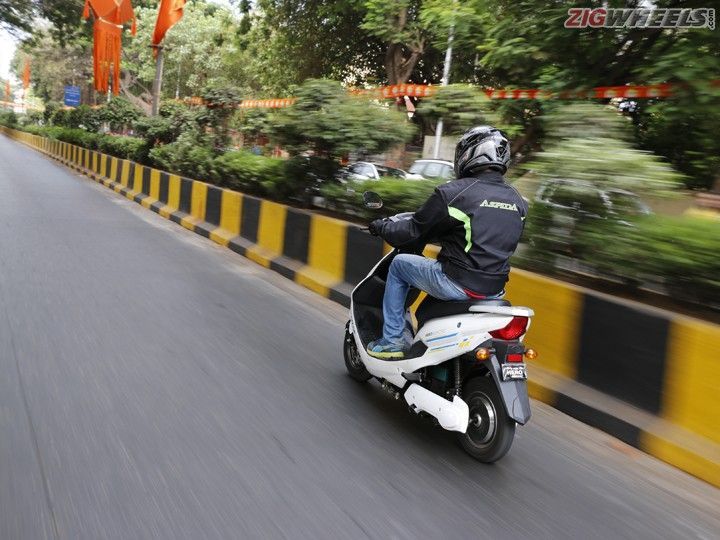
The electric scooters previously launched in India have not been able to generate the required demand in the market. The quality of the brand, reliability, design, and the overall appeal of the vehicle jointly contribute to make a successful product.
Taking into consideration these factors, Hero Electric has introduced the Cruz e-scooter in the market.
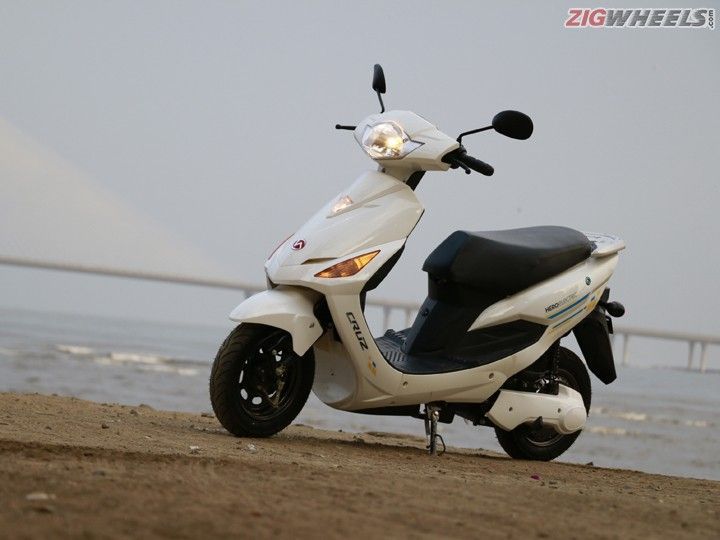
Design: Rating 4/5
In the past, electric scooters did not look appealing and would mostly be looked down at by people. Looking at the Cruz, it’s a different picture altogether. The scooter largely depicts the looks of a conventional gearless two-wheeler with aerodynamic styling. Several on-lookers and fellow commuters questioned me inquisitively about the Cruz every time I took it out for a spin. Also, on knowing it to be electric, some remarked it to be an attractive looking one.

The Hero Electric Cruz comes with automotive grade plastic body with scratch-proof paint. The headlamp is located in the handlebar unit and a pilot lamp is centrally mounted on the front apron. The angular side indicators are flush with the apron on either side of the scooter. The “Hero Electric” badge sits between the indicators giving it a nice aesthetic look.
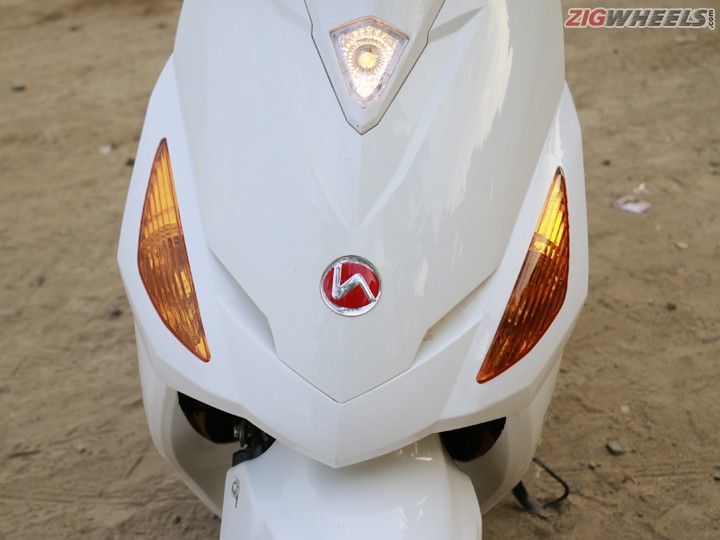
The Cruz sports an analogue instrumental cluster which displays the vehicle speed with an odometer and a battery reserve indicator. The switchgear is not that appealing as it has big blue coloured switches and lack quality. Also the button starter on the right-side switch block doubles as a second switch for the horn.
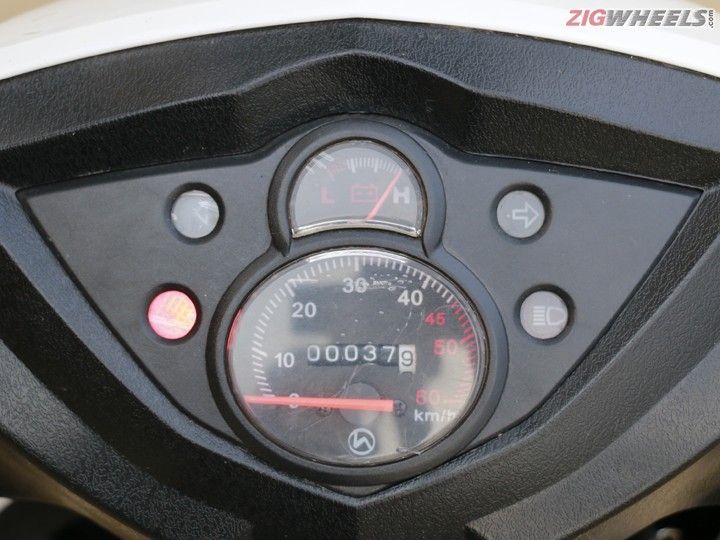
Moving to the rear of the Cruz, the seat has been designed to carry two adults while the rear foot-pegs are slightly tough to reach when needed. The tail of the Cruz has a trapezoidal tail lamp unit with individual side indicators which looks well placed.
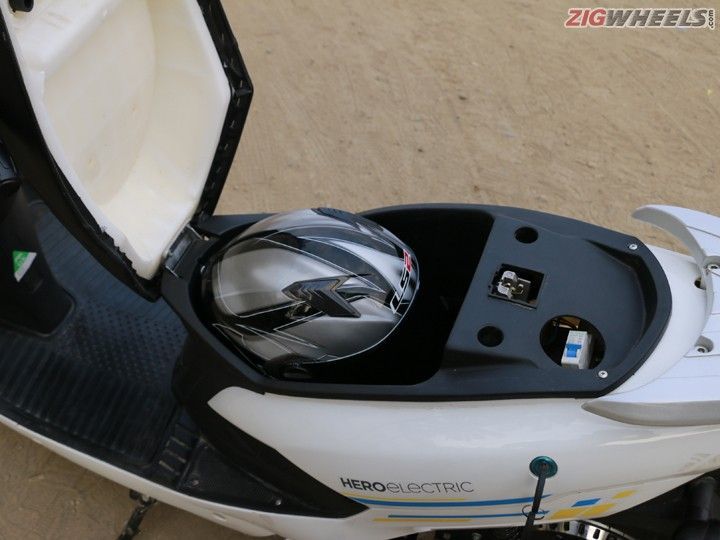
Features: Rating 4.5/5
Feature-wise, the Cruz packs some new and attractive equipment like anti-theft remote lock, 25-litre under seat space that can accommodate a full sized helmet, USB charging port and tubeless tyres. A unique feature that has been incorporated by Hero Electric is an integrated GPS tracking device which is not provided by any manufacturer in other conventional two-wheelers.

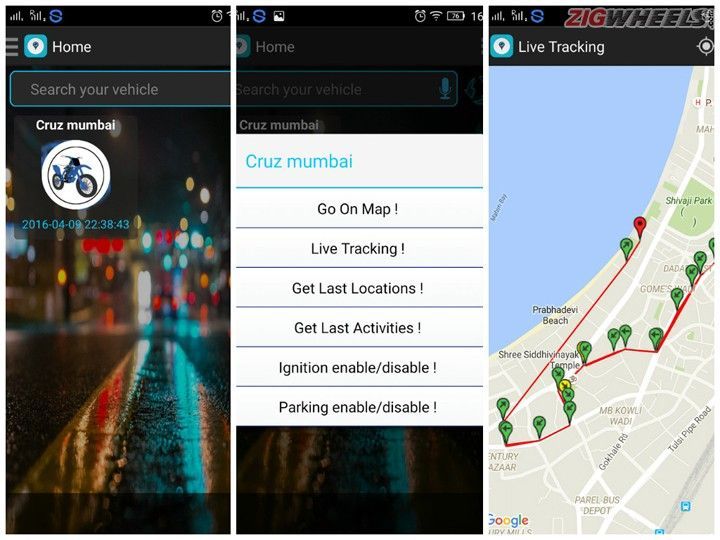
The unit also provides live tracking of the vehicle with periodical speed and location updates that are plotted on a map. The GPS tracker also acts as remote switch to enable/disable the ignition and parking mode of the vehicle through the app.
Such features are highly beneficial for parents who wish to know where their children are with the e-scooter, and at what speed the vehicle is being driven.
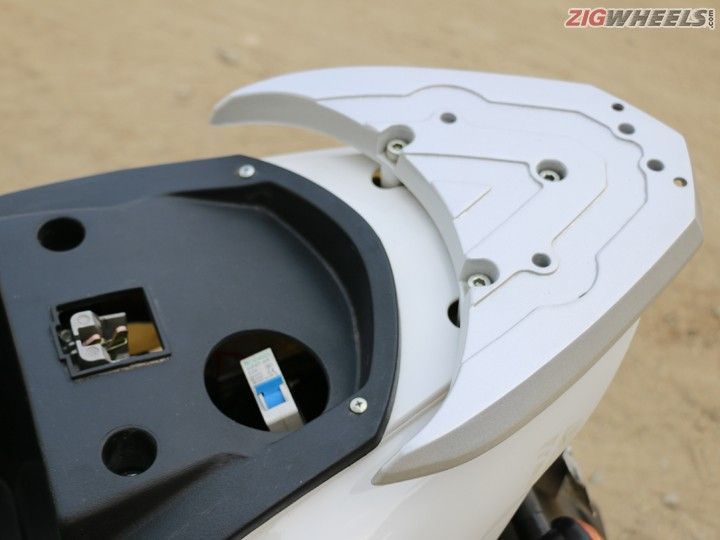
Finally, the Cruz also has a miniature circuit breaker (MCB) switch located under the seat allowing the scooter to be completely disconnected from ignition even if tampered from outside.
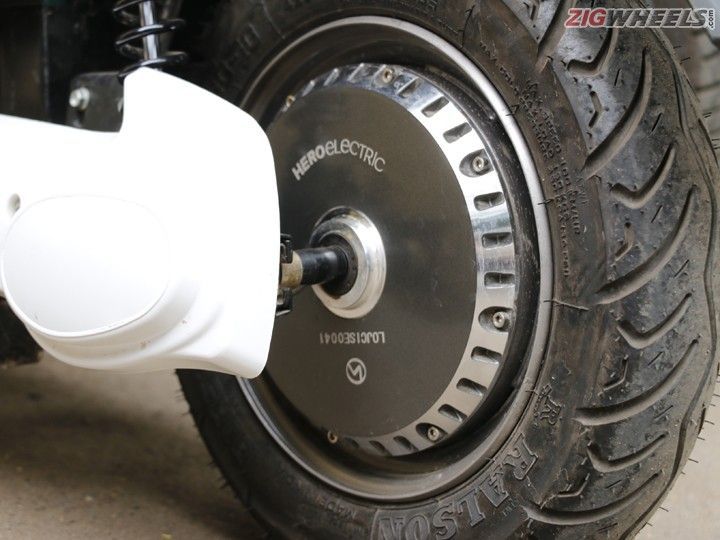
Engine and Performance: Rating 2/5
The electric motor providing motive force for the Cruz is embedded in the rear wheel of the scooter. The 250W Brushless Direct Current (BLDC) motor draws its power from four sealed Lead-Acid batteries that are connected together to provide a combined output of 48V-20 AH.
Astride the Cruz, I turned the key to ignition and subconsciously pressed the ignition button on the right only to hear the beep of the horn. Quickly did I realise that being an electric scooter I just had to twist the throttle to go ahead. The Cruz has good initial acceleration and that is all about the good part.

Riding solo with a fully charged battery, I had to retain myself to the left lane most of the time since after the initial acceleration of the e-scooter, other two-wheelers and cars at intersections would start honking and overtake me. Although the company claims a maximum speed of 25kmph, I could manage to achieve 32kmph on a straight road. Yup, that’s the fastest it goes. The need for power in reserve was highly missed as sometimes I needed to switch lanes to overtake stationary cars. However, the power is just adequate for short trips to the market for grocery errands and the like.
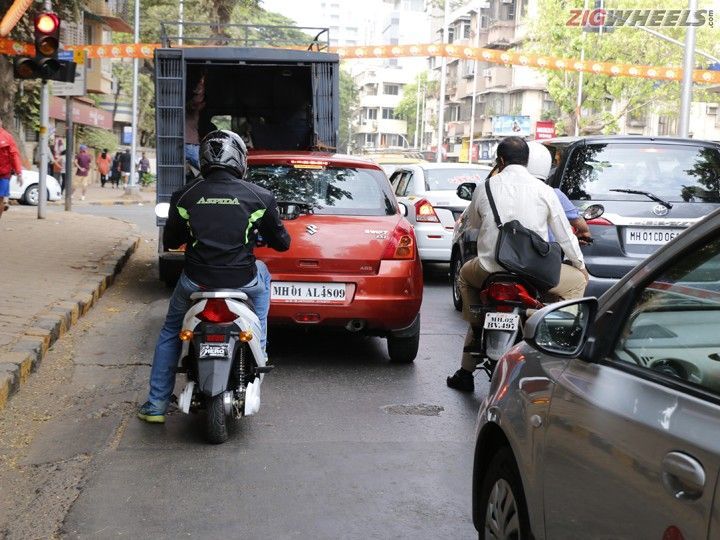
Moreover, when riding on a gradient road like a flyover, the speed of the e-scooter would drop down by 10kmph which at times can be risky considering the average speeds other vehicles carry on flyovers. Indian roads, as we know, have potholes throughout the year and vehicles have to be ridden through them. The impact caused due to such potholes resulted in loss of momentum which I found to be quite annoying.
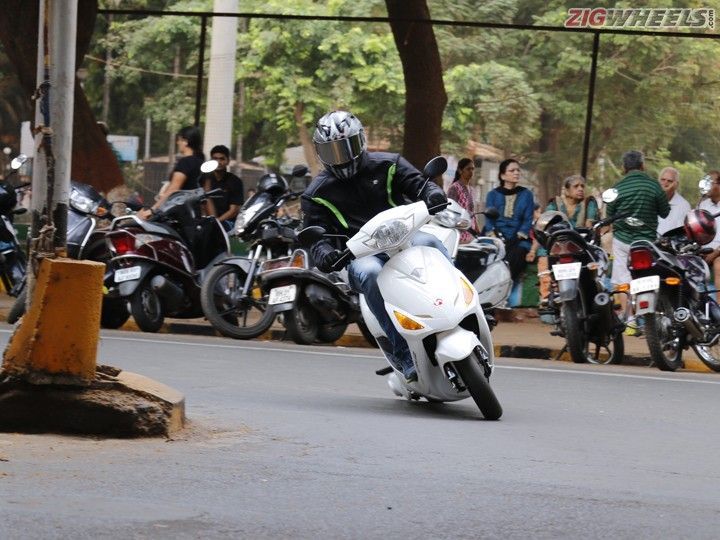
Ride, Handling and Braking: Rating 3/5
The Cruz has a neutral riding posture that allows a college student or a woman or an adult to ride it with ease. On my daily commute with the Cruz in the last few days I haven’t faced any soreness on my back. The cushioning of the seat is firm but comfortable enough for commuting in the city.
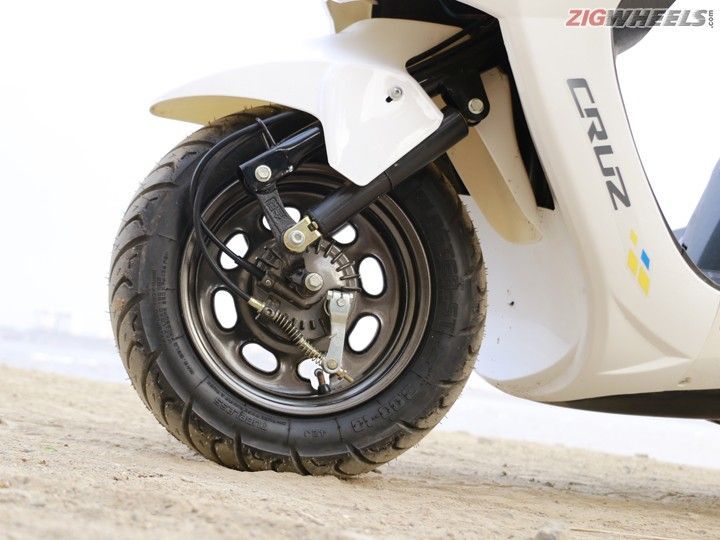
It has a trailing arm suspension set up at the front which is quite soft and has a tendency to dive in on braking. At the rear, the scooter has dual shock absorbers which offers a stiff ride. When going over potholes the battery compartment tends to make a shuddering noise which is annoying.
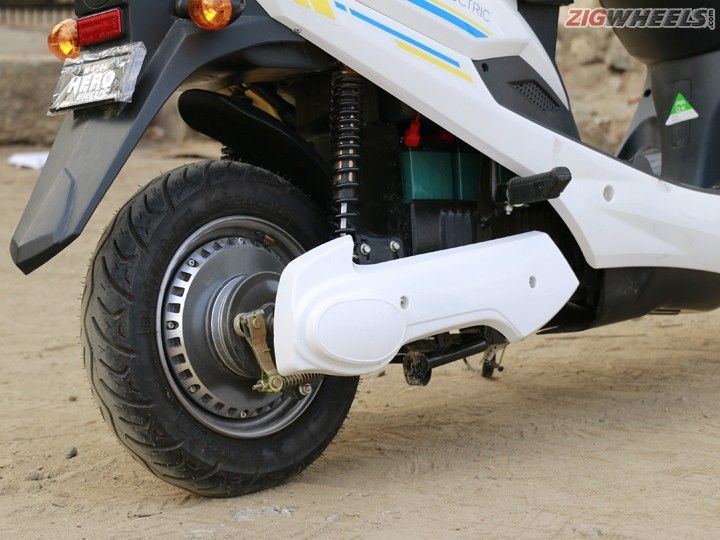
The scooter has a slightly wider turning radius which makes u-turns in a tight spot quite a task. The Cruz sports 10-inch wheels at both ends with a wider set of tires for better grip. It gets drum brakes which perform the job of stopping the vehicle adequately.
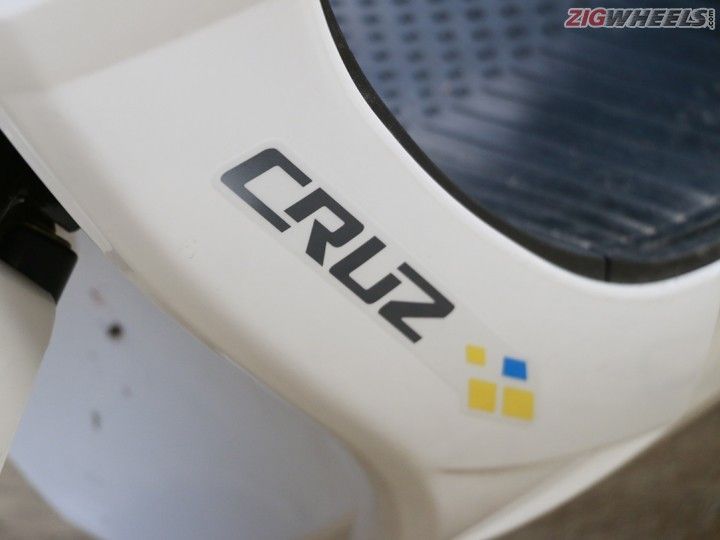
Running Cost: Rating 4.5/5
Hero Electric claims the Cruz can provide a range of 70km on a full charge. Although my daily commute to the office and back is around 10km, on a full charge I could comfortably use the e-bike for three consecutive days. With the battery reserve indicator now close to half, as a safe bet I would consider a range of 60kms on a full charge.
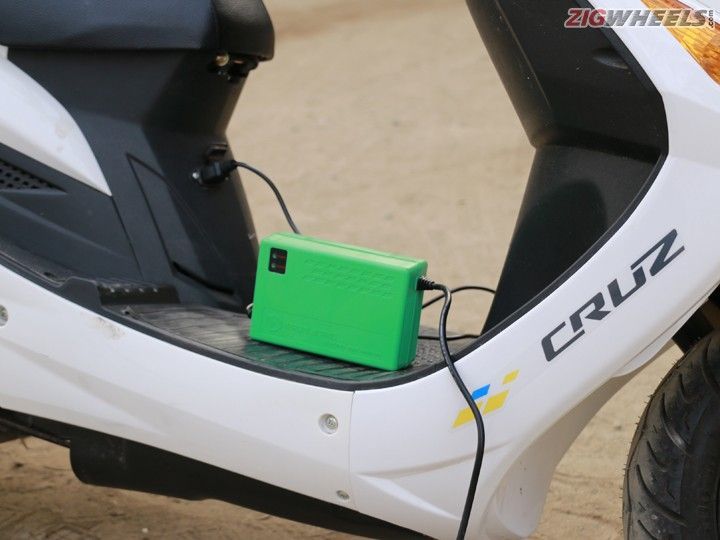
For charging the batteries, the scooter comes with an e-bike charger that can be plugged into a normal household three-pin plug point. Thankfully, since I already have made provision in my parking lot for a plug point, charging the e-scooter was done without much difficulty. The batteries take around 7-8 hours for a full charge after which the charger cuts-off the supply on its own to prevent any damage to the batteries.
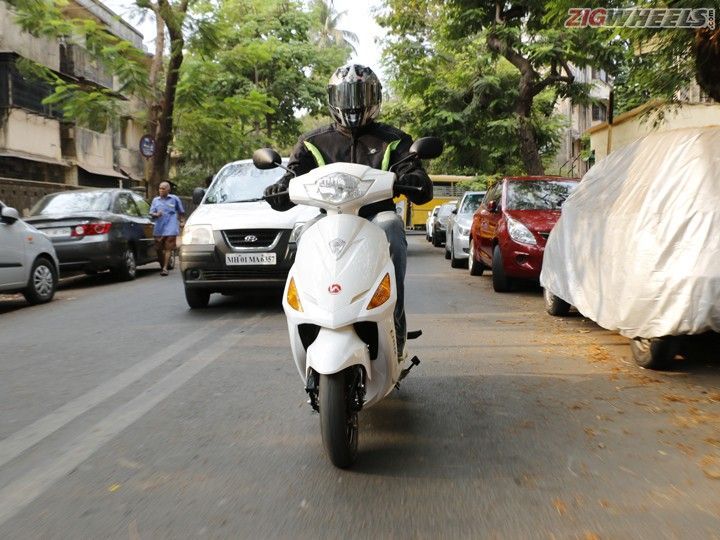
Now if we are to calculate the running cost of the Cruz in comparison to a conventional scooter, here is the breakup. The electricity consumed to charge the Cruz is 1.2 units, which on calculating with per unit cost comes to a figure of Rs 6. As mentioned above we have considered a range of 60kms for the e-scooter, which gives it a final running cost of 10 paise per kilometre.
On the other hand, the cost per kilometre for a conventional scooter is around Rs 1.47, considering that a litre of fuel cost Rs 66.37 currently and it would return a fuel efficiency of around 45km per litre. With that said, the avarage running cost of a conventional scooter is as lot higher than a electric scooter.

When considering the maintenance costs, Hero Electric claims the battery pack is good for approximately 300 charge cycles, which amounts to around 18,000km. However, at the end of it, you would have to shell out Rs 12,500 for a replacement battery pack.
Conventional scooters on the other hand have a service interval of about 5000km. With each service costing approximately Rs 750, at the end of around 18,000 km you would have spent just Rs 2250.
Now, considering the above mathematics involved in the ownership of the vehicle, for a conventional scooter in a period of three years, the cumulative amount spent on per kilometre cost and service cost is about Rs 28,960. Whereas for an e-scooter the same cost comes up to Rs 14,300 which on comparing is almost half of a conventional scooter. So, we can surely conclude that, the Cruz will help to saving a lot in running cost.
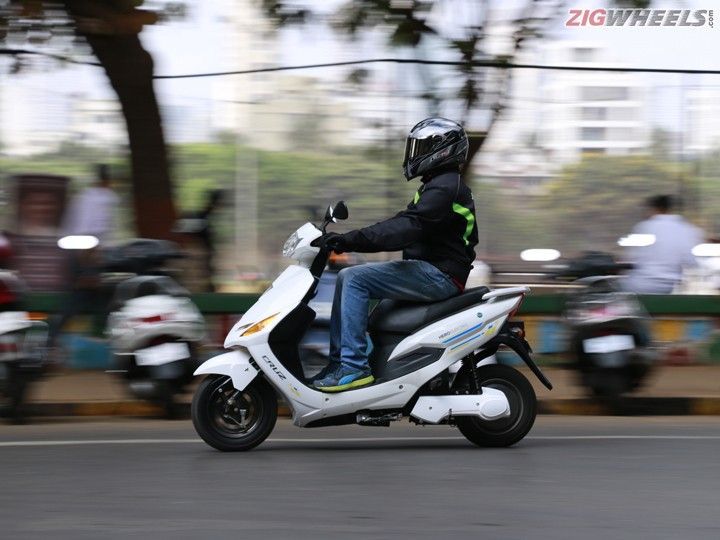
Verdict: 4/5
The Hero Electric Cruz has the form of a conventional scooter with an electric heart making it a good option for city use. The built quality looks comparable to other scooters in the market but only time will tell about the quality in the long run. The Cruz offers features like the GPS tracker which is unique function amongst any other two-wheeler in the current market. It might not have the expected handling and suspension qualities of other scooters but is decent enough for its purpose. The electric drive has the initial pick-up but misses the punch required for riding in daily city traffic and a cruising speed of around 50kmph will make a world of difference.
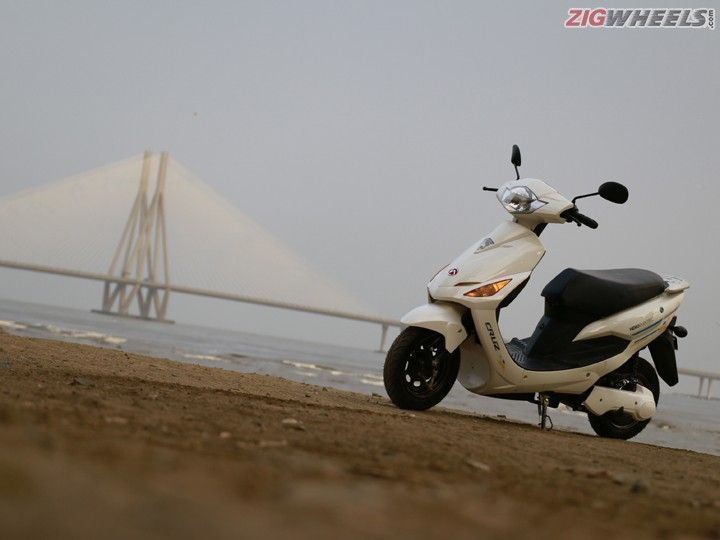
The Hero Electric Cruz is priced at Rs 36,290 on-road in Maharashtra, undercutting its conventional scooter counterparts in the market and makes it a fantastic value for money proposition. With no hassles of registration or need of driving licence, the Cruz is a good option for the whole family for daily runabouts.
With that said, the Hero Electric Cruz is definitely a good effort in the direction of electric vehicles, but nevertheless it still has a few more boxes to be ticked for it to be accepted by the masses.
[“Source-zigwheels”]





